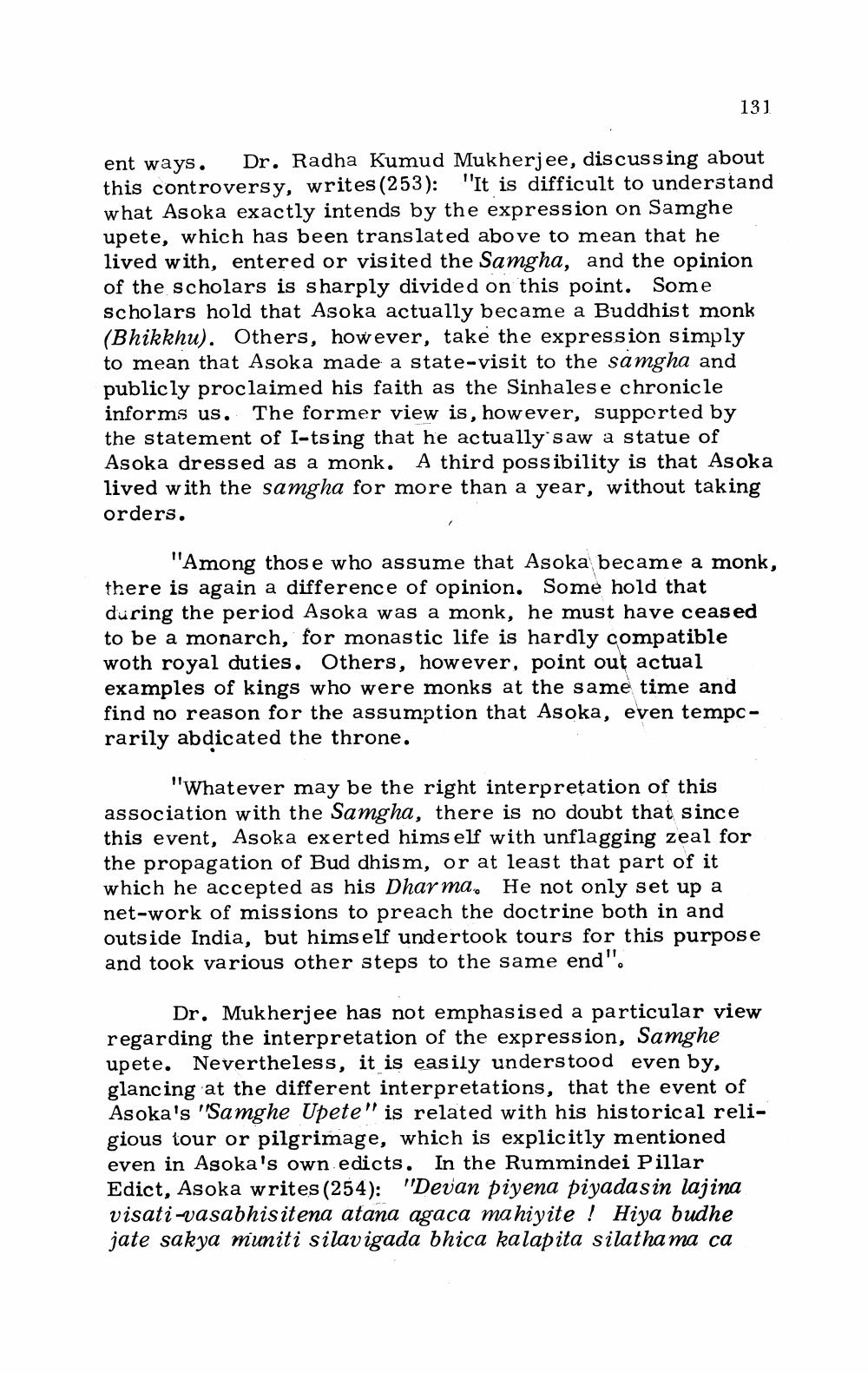________________
131
ent ways. Dr. Radha Kumud Mukherjee, discussing about this controversy, writes (253): "It is difficult to understand what Asoka exactly intends by the expression on Samghe upete, which has been translated above to mean that he lived with, entered or visited the Samgha, and the opinion of the scholars is sharply divided on this point. Some scholars hold that Asoka actually became a Buddhist monk (Bhikkhu). Others, however, take the expression simply to mean that Asoka made a state-visit to the samgha and publicly proclaimed his faith as the Sinhalese chronicle informs us. The former view is, however, supported by the statement of I-tsing that he actually saw a statue of Asoka dressed as a monk. A third possibility is that Asoka lived with the samgha for more than a year, without taking orders.
"Among those who assume that Asoka became a monk, there is again a difference of opinion. Some hold that during the period Asoka was a monk, he must have ceased to be a monarch, for monastic life is hardly compatible woth royal duties. Others, however, point out actual examples of kings who were monks at the same time and find no reason for the assumption that Asoka, even tempcrarily abdicated the throne.
"Whatever may be the right interpretation of this association with the Samgha, there is no doubt that since this event, Asoka exerted himself with unflagging zeal for the propagation of Bud dhism, or at least that part of it which he accepted as his Dhar ma.. He not only set up a net-work of missions to preach the doctrine both in and
utside India, but himself undertook tours for this purpose and took various other steps to the same end".
Dr. Mukherjee has not emphasised a particular view regarding the interpretation of the expression, Samghe upete. Nevertheless, it is easily understood even by, glancing at the different interpretations, that the event of Asoka's "Samghe Upete" is related with his historical religious tour or pilgrimage, which is explicitly mentioned even in Asoka's own edicts. In the Rummindei Pillar Edict, Asoka writes (254): "Devan piyena piyadasin lajina visati-vasabhisitena atana agaca ma hivite ! Hiya budhe jate sakya muniti silavigada bhica kalapita silatha ma ca




